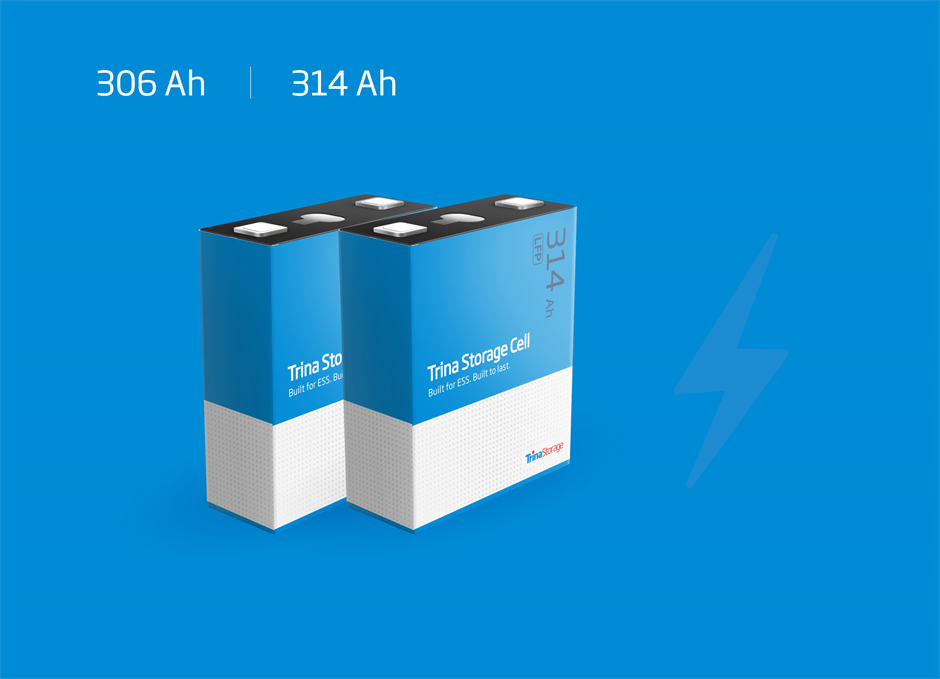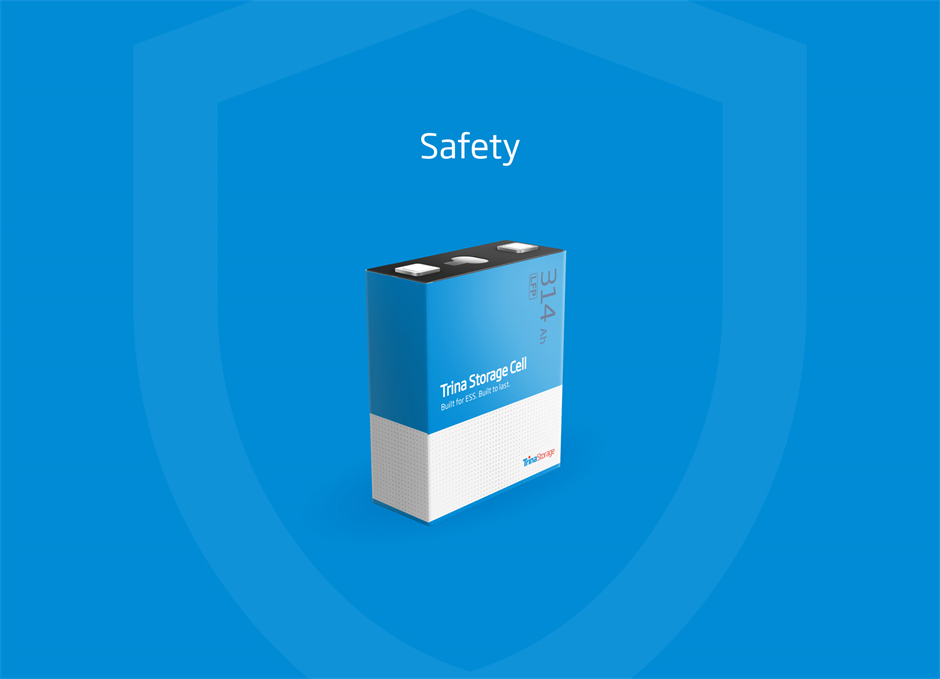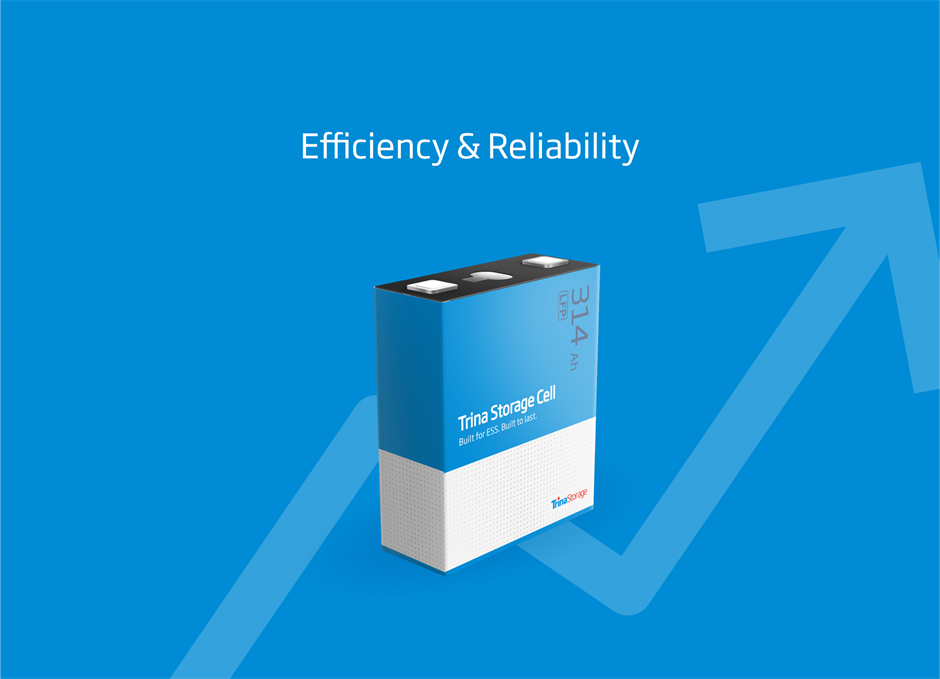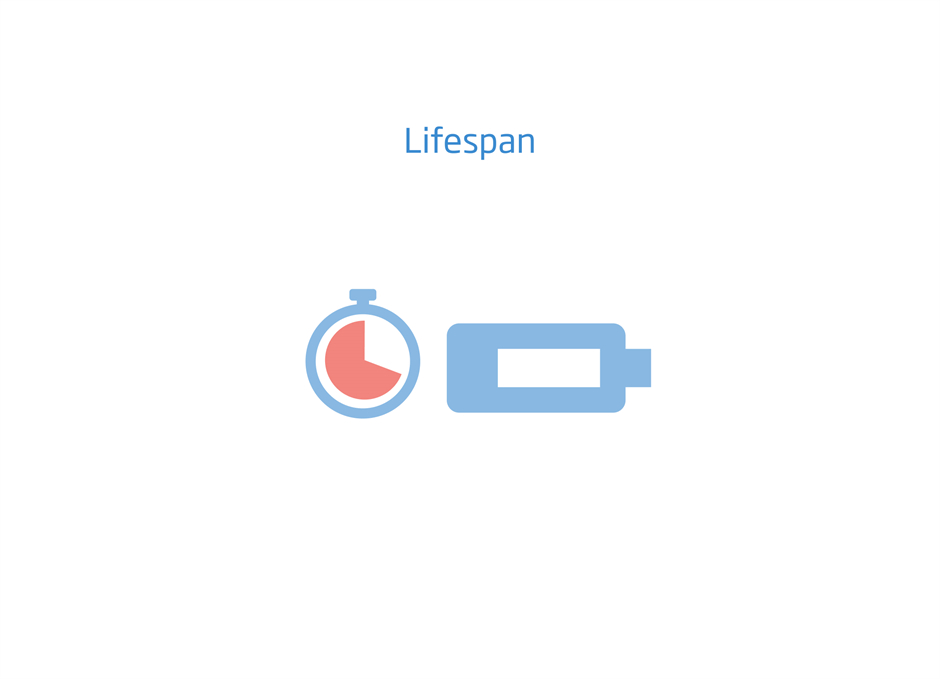The Future of Battery Cells is Here With The All-New Trina Storage Cells
- 24/06/04
- Energy Storage
Battery cell technology is central to the effectiveness and reliability of utility-scale Battery Energy Storage Systems (BESS), playing a crucial role in various applications including renewable energy integration, grid stability and management, plus emergency backup power too.
We’re excited to unveil a breakthrough in battery technology: the all-new 306Ah & 314Ah LFP cells. Our latest innovation boosts capacity and extends lifecycle, setting new standards in the energy storage industry. Designed for both commercial and industrial applications, these cells combine top-tier safety with exceptional performance to meet today’s energy challenges. Read on to learn more about how our Trina Storage cells are powering the future of energy storage making it safer, more efficient, and more reliable than ever before.
Trina Storage Cell Research & Development
Our R&D teams at Trina Storage have been instrumental in scaling our production capabilities from an initial output of 149Ah to doubled at 280Ah and now looking even further at 300+ and 500+. This development allows us to pack more energy into each cell while using less material, which reduces both the cost and environmental impact of production.
By optimising the design and chemistry of our cells, we can offer products that are not only more powerful but also more sustainable. This significant increase is a testament to the innovative approaches and continuous improvements driven by our dedicated researchers.

The all-new Trina Storage Cells
At Trina Storage, we understand that the core value of any battery energy storage system lies in its performance and durability. Our latest 306Ah & 314Ah prismatic cells are built to meet these demands with lifecycles designed to push the boundaries of what's possible in energy storage technology.
Innovative cell design
Our commitment to innovation at Trina Storage is exemplified in our hard-case prismatic cell design, which integrates robustness with cutting-edge safety features. This design is crucial for enhancing the structural integrity and safety of our cells.
Phosphate for chemical safety
A key aspect of our cell design is the use of lithium iron phosphate (LFP) chemistry. LFP is renowned for its inherent safety benefits over other lithium-ion chemistries. It significantly reduces the risk of thermal runaway, a common concern in battery technology, thanks to stable chemical structure.
How Trina Storage Cells are made
The manufacturing process of our cells begins with the careful selection of high-quality materials, ensuring that every component contributes to the overall safety and performance of the product. These materials are transformed into our hard-case prismatic cells through a precise, controlled process that includes:
- Layering the anode, cathode, and electrolyte components accurately.
- Sealing the cells in hard-casing to protect against physical damage and environmental exposure.
- Conducting rigorous quality checks to ensure each cell meets our stringent standards for performance and safety.

306Ah Trina Storage Cells – for impressive longevity
The 306Ah cells are exceptional for their prolonged lifecycle, capable of reaching up to 12,000 cycles at 70% State of Charge (SOC). This impressive longevity means they can provide reliable energy for well over a decade, even under constant use. Such a robust lifecycle makes the 306Ah cells particularly suited for applications where batteries are cycled frequently, such as in daily charging and discharging in solar energy storage systems.
Download the Trina 306Ah Prismatic Cell Datasheet »
314Ah Trina Storage Cells – for high capacity application
Our 314Ah cells, while slightly newer, offer a lifecycle of up to 10,000 cycles at 70% SOC. Although they provide a slightly shorter lifecycle compared to the 306Ah cells, they compensate with a higher capacity, which is crucial for applications requiring larger energy outputs over shorter periods. This makes the 314Ah cells ideal for more intensive applications, including larger scale renewable integration and commercial energy storage systems where high capacity and substantial discharge capabilities are critical.
Download the Trina 314Ah Prismatic Cell Datasheet »
Lower Levelized Cost of Storage (LCOS)
The extended lifecycles of both the 306Ah and 314Ah cells translate directly into significant cost savings over time. Longer lifecycles mean fewer replacements, reduced maintenance costs, and more reliable performance throughout the lifespan of the storage system. For utility-scale installations, this means achieving a lower Levelized Cost of Storage (LCOS), making renewable energy projects more economically competitive.
Trina Storage Cells safety and testing
At Trina Storage, ensuring the safety of our battery cells is paramount. We adhere to stringent safety standards and conduct rigorous testing on each cell for industry-leading safety for our customers.

Adherence to safety standards
Our cells are tested and certified against internationally recognized safety standards, including UL 9540A, which is specifically designed for testing the fire safety of battery energy storage systems. This standard assesses the potential fire risks associated with battery systems and ensures that they are minimised through robust design and manufacturing practices. In addition to UL 9540A, our cells also meet the requirements of IEC 62619, UL 1973, and UN 38.3, covering various aspects of safety from electrical reliability to safe transport.
Comprehensive testing
Each cell undergoes a series of electrical and chemical safety tests to ensure they perform safely under all conditions. Electrical safety testing includes overcharge, over-discharge, short-circuit, and thermal runaway tests, which are critical for preventing accidents and ensuring the cells operate within safe limits.
Crash testing for mechanical integrity
To further ensure safety, our cells undergo rigorous mechanical integrity tests, including crash tests. These tests simulate various impact scenarios to ensure that even in the event of a collision or mechanical stress, the cells will not rupture, leak, or pose a fire hazard.
These safety measures reflect our commitment to not only meeting but exceeding safety expectations. By continuously advancing our safety protocols and testing methods, we provide our customers with some of the safest, most reliable energy storage solutions available on the market today.
The benefits of battery cell innovation for BESS
Battery cells with high energy density can store more energy within a smaller footprint, making BESS more practical and cost-effective, especially in space-constrained environments. Here are the reasons why battery cell innovation is a critical aspect to consider when choosing an energy storage partner.

Efficiency & Reliability
The efficiency of a battery cell determines how much of the stored energy can be converted back into usable power. Higher efficiency rates minimise energy losses during charge and discharge cycles, enhancing the overall performance of BESS. Reliability is also critical as it ensures that energy can be consistently supplied when needed, which is vital for applications such as grid stabilisation and peak shaving.
Lifespan & Sustainability
The lifecycle of battery cells is a key factor in determining the economic viability of a BESS. Cells that can withstand more charge and discharge cycles before their capacity falls significantly are more sustainable and cost-effective over time. This is particularly important in utility-scale energy systems where replacement costs can be prohibitive.

Safety & Stability
Safety is paramount in battery storage systems, especially as the energy capacity and density increase. The chemical stability of the battery cell material influences the risk of fire and other hazards. For instance, LFP cells are favoured in many BESS applications due to their inherent thermal stability and lower risk of thermal runaway compared to other lithium-ion chemistries.
Scalability & Flexibility
Modern battery cell technology like Trina’s supports scalable and flexible BESS configurations, allowing systems to be tailored to specific power and capacity requirements. This is essential for integrating BESS with variable renewable energy sources like wind and solar, where the ability to scale storage capacity to match generation capacity is crucial.
Conclusion
As we continue to forge ahead here at Trina, with our 280Ah cell and now our new 306Ah and 314Ah prismatic cells epitomise the strides we've made in battery technology. These innovations not only set new benchmarks for capacity and lifecycle but also ensure the highest levels of safety and efficiency.
As the energy storage landscape continues to evolve, Trina remains committed to delivering reliable and sustainable energy solutions. By continuously advancing our technology and expanding our manufacturing production, we aim to meet the growing global demand for energy storage.
Our dedication to improving every aspect of battery cell design and performance ensures that our clients always have access to the best products in the market. Join us as we continue to power the future: safely, efficiently and sustainably.
Relevant Topics
Smart Energy Solutions
delivered straight to your inbox

